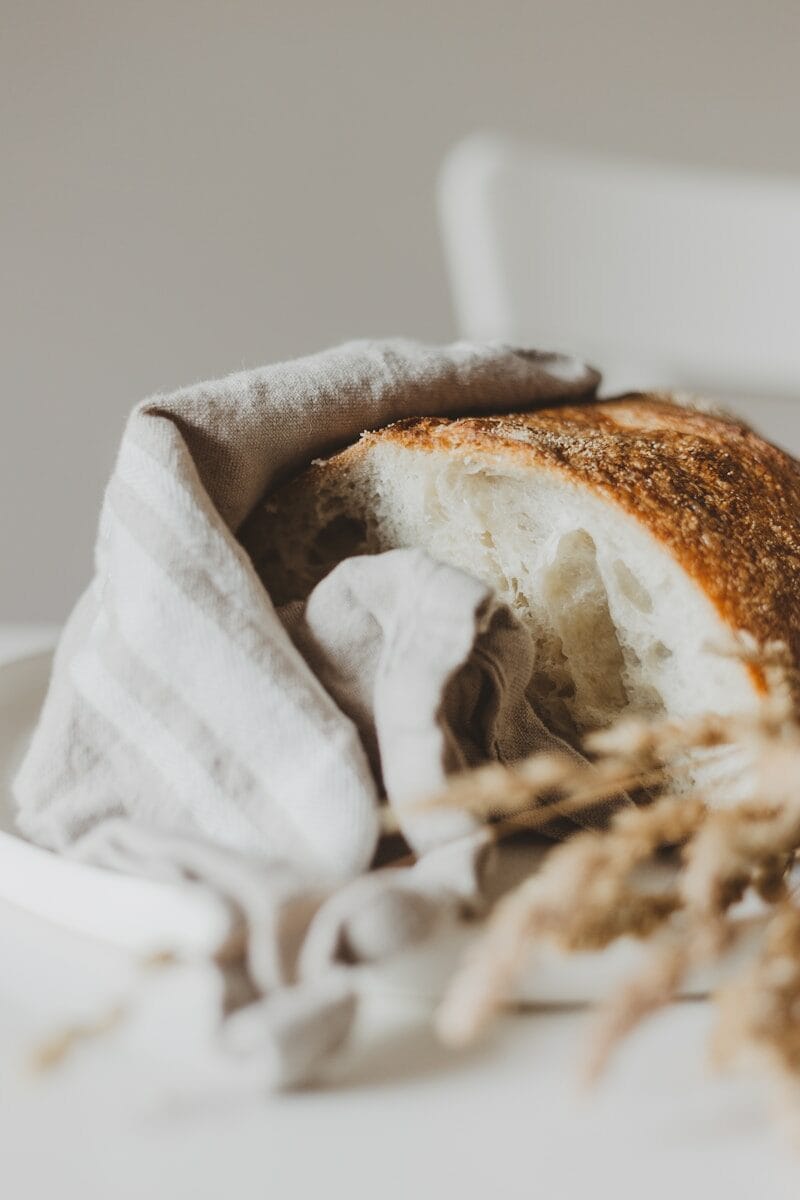Happy Table: 5 Mindful Eating Factors that Make Weight Loss Possible Before Your Next Holiday
What makes these mindful eating factors powerful tools for weight loss? Happy Table breaks down 5 factors that make weight loss possible before your next holiday. From portion control to food pairing, are options you could choose from starting today.

Easter’s over. The chocolate’s been eaten, the big meals shared, and the sense of “I’ll get back on track after the holiday” is starting to feel a little more urgent: summer isn’t just coming, it’s booked. The trip is confirmed, the beach is calling and that bikini you swore you’d feel confident in this year? It’s no longer theoretical.

How do you reclaim control of your body gently, but firmly? Feeling heavy, bloated, or tired in your own body doesn’t feel like freedom. And no amount of body positivity makes up for the discomfort of carrying around fatigue, inflammation, or frustration with your clothes. The truth is, you don’t need a drastic detox or another rigid plan. You need a few clear, sustainable shifts that work with your body, not against it. These five real-world eating habits are small, smart changes that help reset your system, support long-term health, and yes, make that summer wardrobe feel a little more closer to reality.
If you are a woman who is well-versed in wellness and the real pressures of life, the advice you receive about food often feels like a merry-go-round of fads and contradictions. Many of us already know that the answer to better health and sustainable weight loss is neither extremes nor deprivation, but conscious, informed choices.
Portion Control: Why Less is More

The human body is remarkably adaptive. It doesn’t need as much food as we often give it—especially if most of our day is spent at a desk or in a car. Portion control isn’t about starvation; it’s about awareness. Studies have shown that reducing portion sizes can significantly reduce overall caloric intake without necessarily increasing hunger or reducing satisfaction.
In fact, the National Institutes of Health (NIH) found that people eating from larger portions consumed 30–50% more calories than those served smaller amounts, even when they didn’t feel hungrier.
From a hormonal perspective, smaller portions help regulate insulin and ghrelin (the hunger hormone), preventing blood sugar crashes and overeating cycles. For many women, especially over 35, learning to eat slowly and to satisfaction—not fullness—can recalibrate appetite and energy levels without rigid dieting.
Here are a few smart, sustainable portion control strategies that support health and weight loss without counting every calorie or measuring every bite. These are especially effective if you want real results without turning eating into a math equation:
- Use Smaller Plates—But Don’t Pile Them High– Psychologically, we eat with our eyes first. Using a smaller plate naturally encourages smaller portions, but the key is not turning it into a mountain. Keep space around your food. It tricks your brain into feeling satisfied with less—and often, less is exactly enough.
- Fill Half Your Plate with Vegetables First– Before adding anything else, cover half your plate in non-starchy vegetables like leafy greens, broccoli, cauliflower, or peppers. This builds volume, fiber, and nutrients into your meal without loading up on calories. It also subtly reduces room for starches or proteins that can easily tip you into “too much.”
- Don’t Eat from the Package– It’s deceptively easy to overeat when snacking directly from a bag or container. Instead, portion out what you plan to eat—whether it’s nuts, crackers, or even granola—into a bowl or small plate. It’s a simple habit that builds mindfulness into your eating.
- Pause Halfway Through Your Meal– Set your fork down. Take a breath. Ask yourself: Am I still hungry, or just finishing out of habit? Giving your body a moment to register fullness helps you stop when you’re satisfied—not stuffed.
- Use Your Hands to measure food portions-Your hands are one of the simplest, most effective tools for portion control because they’re proportionate to your body. A good rule of thumb, literally, is to use your palm to gauge protein, two open hands for vegetables, one cupped hand for carbohydrates, and your thumb to measure healthy fats like oil, avocado, or nuts. This method is both practical and adaptable, whether you’re at home, out for dinner, or traveling.
- Stop at 80% Full– Borrowed from the Japanese concept hara hachi bu, this mindful habit encourages you to stop eating when you feel about 80% full. It takes practice, but over time, it trains your hunger cues to speak louder than your plate.
- Sit Down. Focus. Slow Down.– When you eat standing up, distracted, or rushed, you disconnect from your body’s natural signals. Make meals intentional—even when life is busy. Slow eating helps digestion, reduces overeating, and transforms food from fuel into nourishment.
Avoid Sugar, Not Fruits

We’re not talking about apples or berries here. We’re talking about added sugars—those found in cereals, protein bars, flavored yogurts, sauces, and drinks. The American Heart Association recommends no more than 25 grams of added sugar per day for women. Most of us exceed that before noon.
Sugar spikes insulin, which stores excess glucose as fat, especially around the midsection. Chronically elevated insulin not only promotes fat storage but is also linked to inflammation, insulin resistance, and hormonal imbalances that affect everything from mood to fertility.
Eliminating added sugar, even for a few weeks, often results in noticeable weight loss, improved sleep, and a more stable mood. It also trains the taste buds to reset, making natural foods taste richer and more satisfying.
Avoid Protein-Carb Combinations
This idea comes from the food combining principle popularized by naturopathic traditions, which argue that protein and carbohydrates require different digestive environments. Proteins need an acidic environment, while carbs are best digested in alkaline conditions.

Combining them, the theory suggests, can slow digestion and lead to bloating or poor nutrient absorption.
Scientific support for strict food combining is limited, but many women report feeling lighter and less sluggish when avoiding heavy protein-carb combinations, like steak and potatoes or chicken and pasta. Anecdotally, separating meals into carb-and-veg or protein-and-veg combinations can reduce calorie load, support digestion, and lead to gradual weight loss.
It’s not about rigid separation but about noticing how your body responds. Observing your energy levels after meals, bloating, cravings, can help make better choices.
Pairing Carbs with Vegetables
Carbs aren’t the enemy. But how we eat them matters. Combining complex carbs like quinoa, oats, or sweet potatoes with high-fiber vegetables slows down digestion, prevents blood sugar spikes, and increases satiety.
Fiber doesn’t just “bulk up” your meal—it acts as a buffer, slowing the breakdown of glucose and moderating insulin release. A study published in Nutrients showed that high-fiber diets improve insulin sensitivity and aid in weight regulation, especially among women over 40. Think roasted root veggies over a bed of greens, or brown rice alongside steamed broccoli and tahini.
This approach makes you feel full on fewer calories and reduces cravings later in the day. Plus, it’s a sustainable habit that nourishes your microbiome and supports hormone balance.
Avoid White Carbs

White rice, white bread, and regular pasta are staples in many diets, but they’re also highly processed and stripped of fiber and nutrients. These “refined” carbs are quickly absorbed by the body, causing sharp blood sugar spikes followed by crashes that can lead to fatigue, mood dips, and increased hunger. Swapping these for whole versions—brown rice, sourdough, legumes, or lentil pasta—adds back fiber, slows digestion, and reduces insulin spikes. Over time, this improves metabolic flexibility: the body becomes better at burning fat for fuel rather than relying on sugar.
If you’re experiencing energy dips, stubborn belly fat, or hormonal mood swings, removing these white carbs for even 10 days can often provide clarity—not just mentally, but metabolically.
How Mindful Eating Factors Help Weight Loss
What makes these mindful eating factors powerful tools is their versatility. You don’t need a radical overhaul before your next holiday. You need a return to what works: small, intentional shifts that support your body, steady your energy and quietly reshape the way you feel in your own skin. These five factors help you understand what your body responds to, so you’re not guessing or grasping at the next quick fix.
Identify the tools that help you reduce inflammation, steady your energy and make weight loss possible without obsession or deprivation.
The goal isn’t just to look good on the beach but to feel right in your body again, lighter and clearer. Whether it’s slipping into that sexy bikini or simply waking up without the mental tug-of-war around food, these shifts are your foundation. Start now for the right reasons, not because time is running out, but because feeling good is worth not putting off any longer.
Join the Better Plate Team! Do you want to share your story and inspire our readers ? Know that YOUR EXPERTISE is paving the way for a fairer, happier society.




